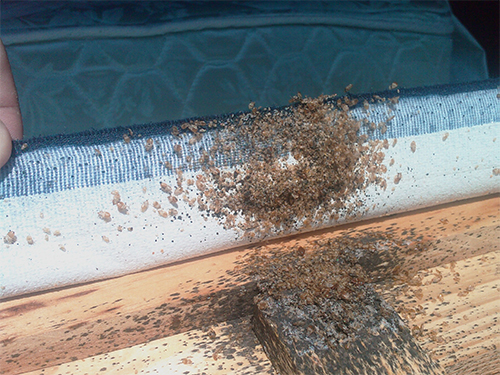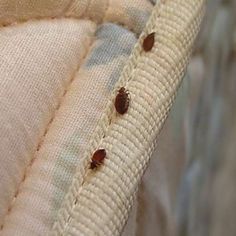Reliable Exterminator Services to Safeguard Your Home from Unwanted Pests
Reliable Exterminator Services to Safeguard Your Home from Unwanted Pests
Blog Article
Obtain Enlightened Concerning the Kinds of Pest Control Techniques and Their Advantages for House Owners
Understanding the numerous insect control methods offered to homeowners is crucial for efficient parasite administration. Homeowners that are well-informed can make calculated choices that not only address bug issues however likewise enhance the general top quality of their living atmosphere.
Chemical Parasite Control Methods
Chemical bug control methods are an important component of incorporated insect monitoring strategies for house owners looking for effective services to pest problems. These approaches entail the application of chemical substances developed to get rid of or hinder insects that endanger personal effects, wellness, and convenience. Common chemicals utilized consist of pesticides, rodenticides, fungicides, and herbicides, each customized to target specific insects.
The main benefit of chemical bug control is its fast performance; several solutions provide immediate results, reducing pest populations significantly in a brief time. In addition, breakthroughs in chemical solutions have actually brought about items that are extra eco pleasant and have reduced poisoning degrees for non-target microorganisms when applied properly.

Organic Pest Control Methods
All-natural pest control techniques have actually gained importance as home owners seek much safer and a lot more lasting alternatives to conventional chemical strategies. Biological insect control methods make use of natural killers, parasites, or microorganisms to handle parasite populaces efficiently. This technique is not just eco pleasant but likewise lessens the threat of injury to non-target varieties, including advantageous bugs and wildlife.
Among one of the most usual organic control approaches entails presenting all-natural killers right into the setting. Ladybugs can be used to control aphid populations, while nematodes target soil-dwelling pests like grubs. Additionally, parasitoids-- organisms that live on or within a host-- can be employed to control specific parasite varieties by laying eggs inside them, inevitably bring about their death.
One more technique is the use of biopesticides, which are stemmed from natural materials such as minerals, plants, or germs (bed bug exterminator). These products can effectively target parasites while posturing very little danger to humans and pets. Generally, biological insect control techniques give home owners with an effective means of insect management that straightens with environmental concepts, promoting a healthier living environment while decreasing reliance on artificial chemicals
Mechanical Bug Control Methods
Mechanical bug control techniques encompass a variety of approaches that literally prevent or eliminate insects without making use of chemicals. These methods are particularly advantageous for homeowners looking for eco pleasant choices while guaranteeing the safety of their space.
One common approach is the usage of barriers, such as displays, nets, and catches, which stop pests from going into homes or specific areas. For example, installing window displays can effectively keep pests out, while using physical obstacles around yards can discourage bigger parasites like deer or rabbits. Furthermore, mechanical catches made for rats can capture and remove these insects without the requirement for poisonous substances.
Another effective technique includes making use of vacuum cleaners and mops to get rid of pests directly from surfaces. Regular cleaning and maintenance can substantially minimize bug populaces by removing food resources and concealing places. In addition, using tools like ultrasonic parasite repellents can deter various pests through acoustic wave that are undesirable to them but faint to human beings.
Social Bug Control Practices
Cultural insect control practices focus on changing the setting and administration methods to create problems that are much less favorable to pest infestations. These practices are basic in preserving a balanced ecosystem and reducing the dependence on chemical interventions. By altering farming methods, property owners can effectively hinder bugs while promoting plant wellness.
One typical method consists of crop rotation, which interferes with the life cycles of parasites by altering the kinds of plants expanded in a specific location (bed bug exterminator). This not only decreases pest populations yet likewise improves dirt health. Furthermore, intercropping-- planting varied crops in distance-- can confuse bugs and reduce their capacity to locate their recommended host plants
Water management is an additional vital facet of cultural techniques. Proper see this page watering techniques can stop standing water, which serves as a reproduction ground for insects and other parasites. Furthermore, keeping sanitation in and around the home, such as regularly getting rid of particles and food waste, can dramatically decrease look here parasite attraction.
Incorporating these social techniques right into a comprehensive insect administration approach allows homeowners to produce an atmosphere that normally discourages parasites, thereby enhancing the efficiency of other control techniques while advertising lasting horticulture and landscape design.

Integrated Pest Monitoring Approaches
Integrated Bug Administration (IPM) represents a holistic strategy that integrates different strategies to effectively take care of bug populations while decreasing ecological impact. This technique incorporates biological, social, physical, and chemical methods to achieve lasting insect control. By assessing pest populaces and their natural adversaries, IPM highlights monitoring and determining insects prior to executing control measures.
Among the core principles of IPM is using thresholds, which develop the level of bug activity that necessitates intervention. This makes certain that treatments are used only when essential, decreasing the dependence on chemical pesticides. Biological control techniques, such as introducing natural killers or parasites, operate in conjunction with cultural techniques like crop turning and environment control to interfere with pest life cycles.
Moreover, IPM encourages using least-toxic chemical alternatives when intervention is needed, focusing on products that position marginal risk to non-target microorganisms and the environment. For house owners, taking on IPM approaches not only improves the efficiency of insect monitoring yet also promotes a much healthier living setting, fostering biodiversity and minimizing chemical direct exposure. Inevitably, IPM empowers house owners to make enlightened choices that stabilize pest control with environmental obligation.
Conclusion
In final thought, understanding the read what he said numerous insect control approaches equips property owners to make enlightened decisions regarding pest administration. Each technique-- chemical, organic, mechanical, social, and incorporated bug monitoring-- uses unique advantages that cater to different needs and preferences.
Understanding the different insect control approaches readily available to property owners is crucial for efficient bug management.Chemical bug control methods are a crucial component of incorporated insect administration approaches for property owners seeking reliable solutions to pest invasions. In general, organic insect control strategies provide property owners with a reliable methods of pest administration that straightens with eco-friendly principles, promoting a healthier living setting while lowering reliance on synthetic chemicals.
Cultural bug control techniques concentrate on changing the environment and management methods to produce problems that are much less helpful to pest problems.In verdict, understanding the various insect control methods equips property owners to make educated choices relating to pest monitoring.
Report this page